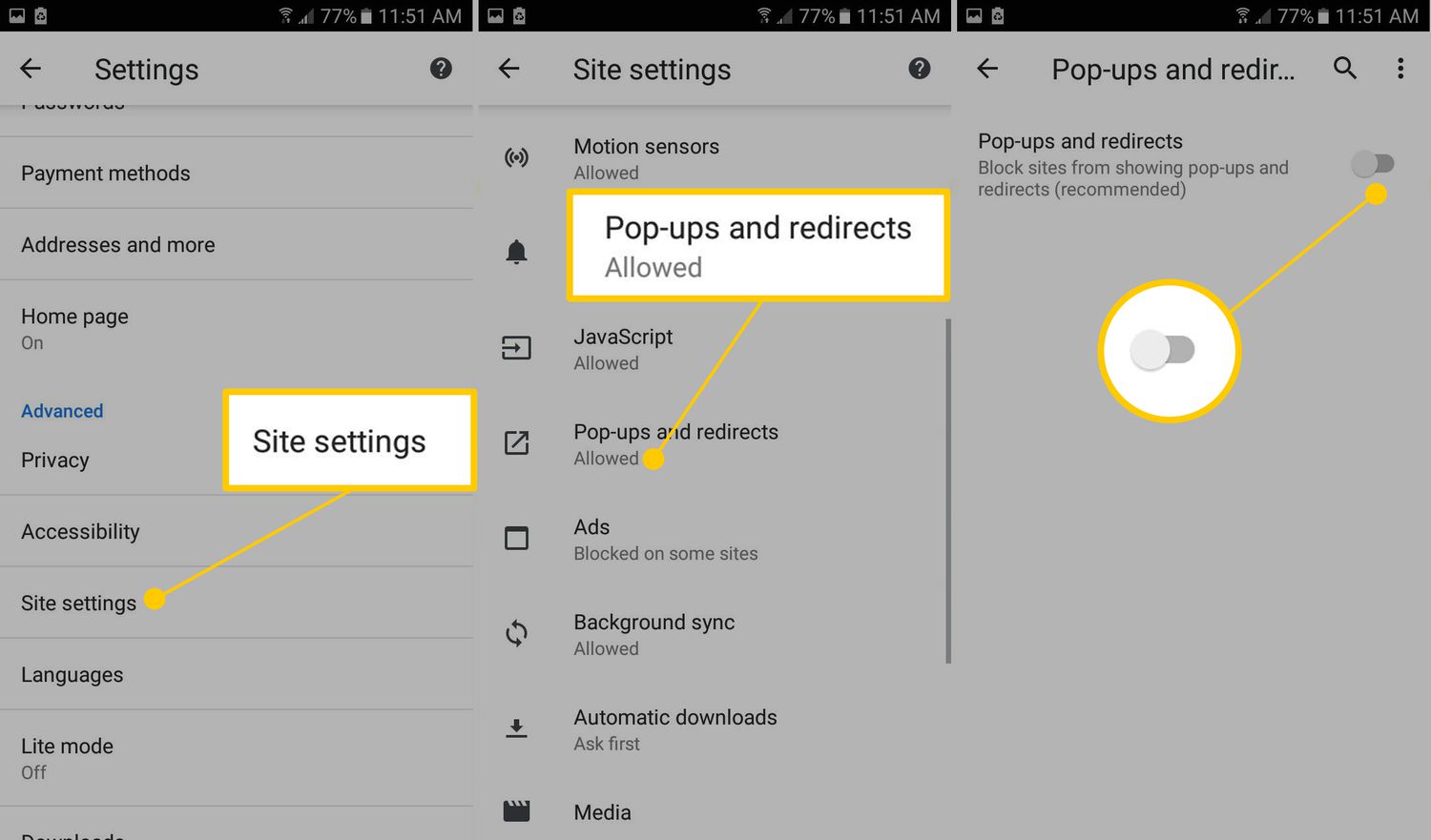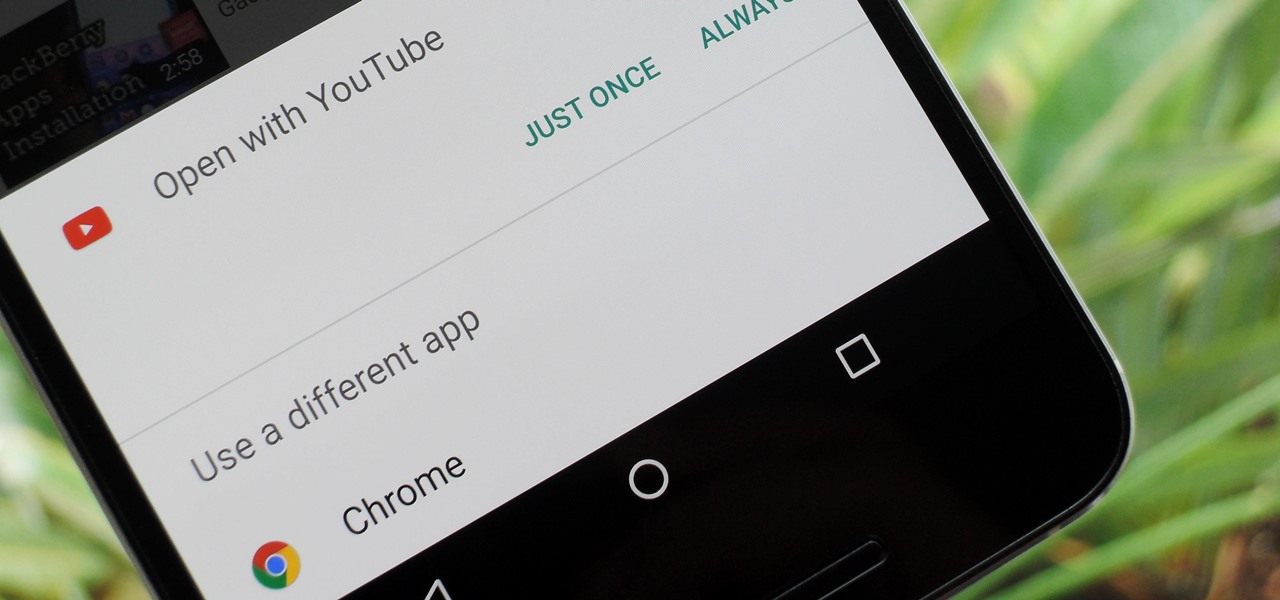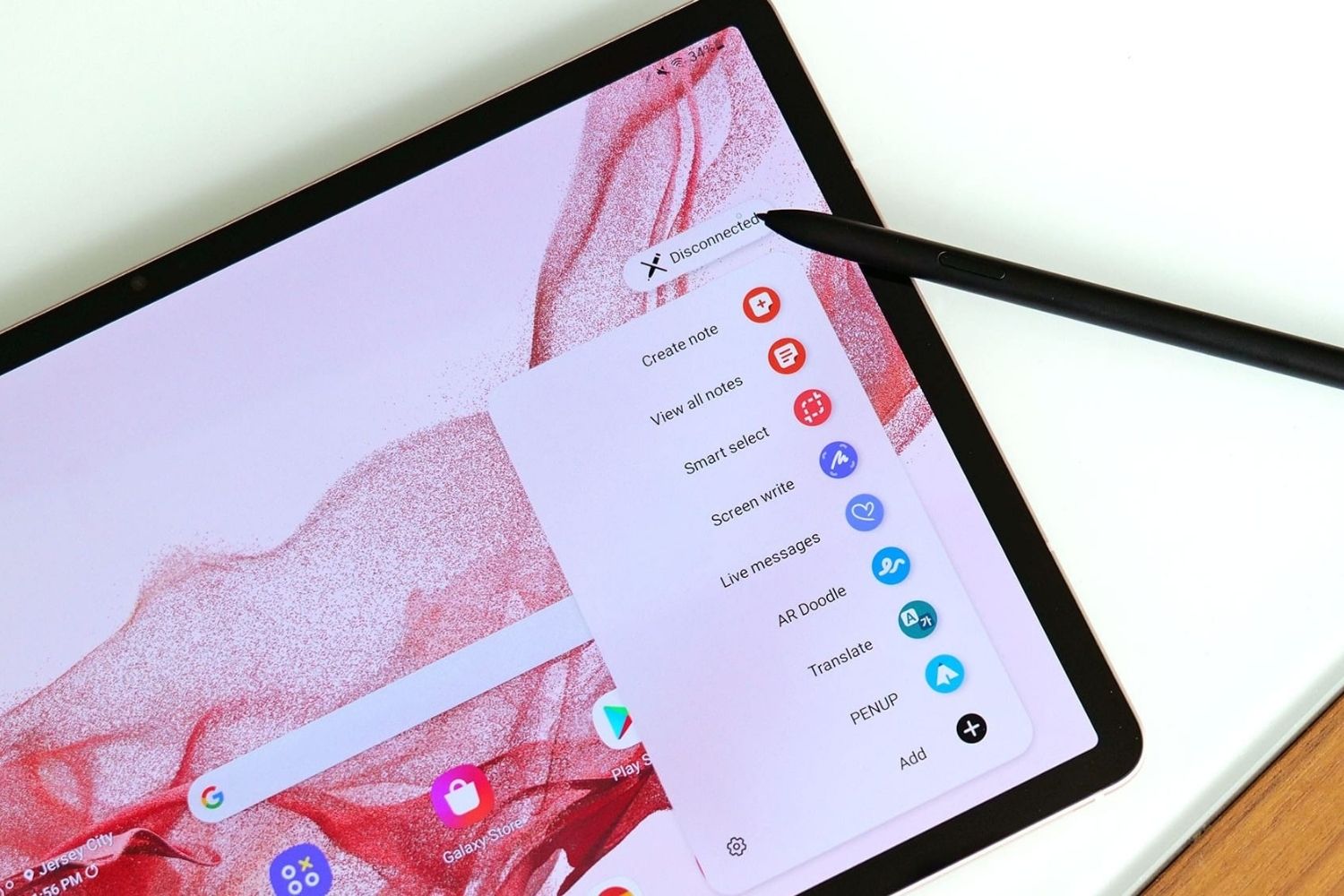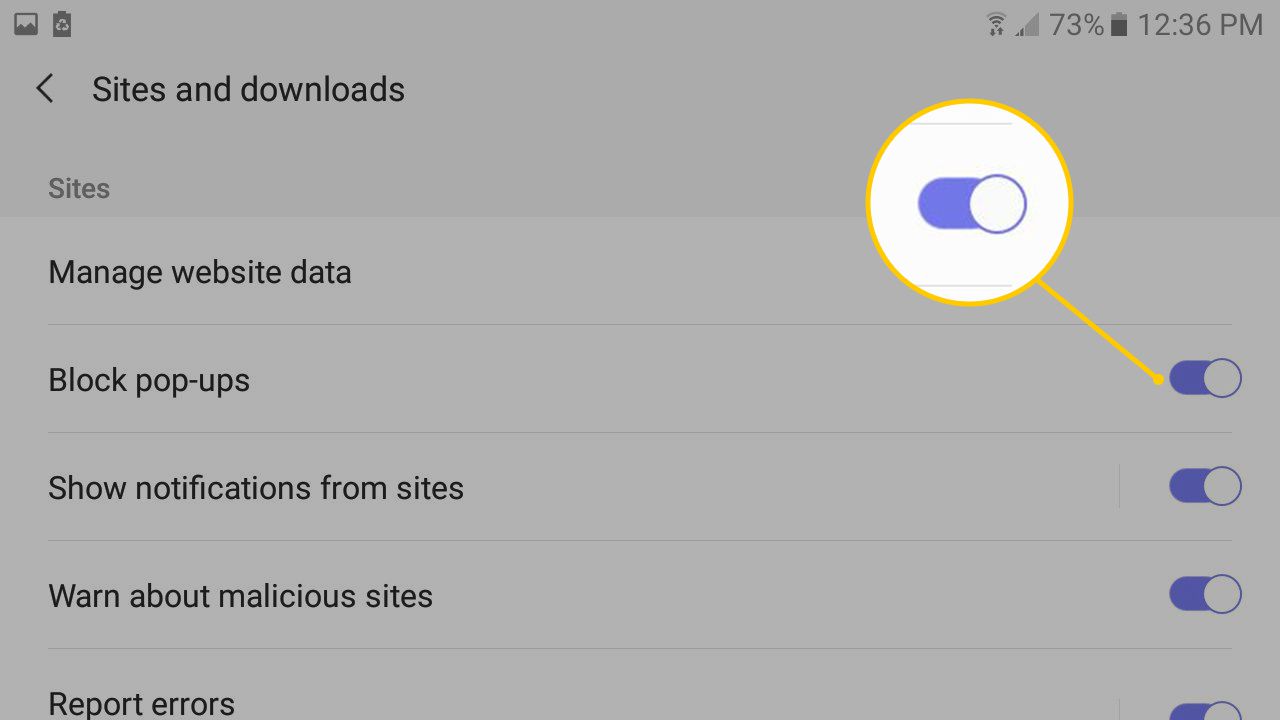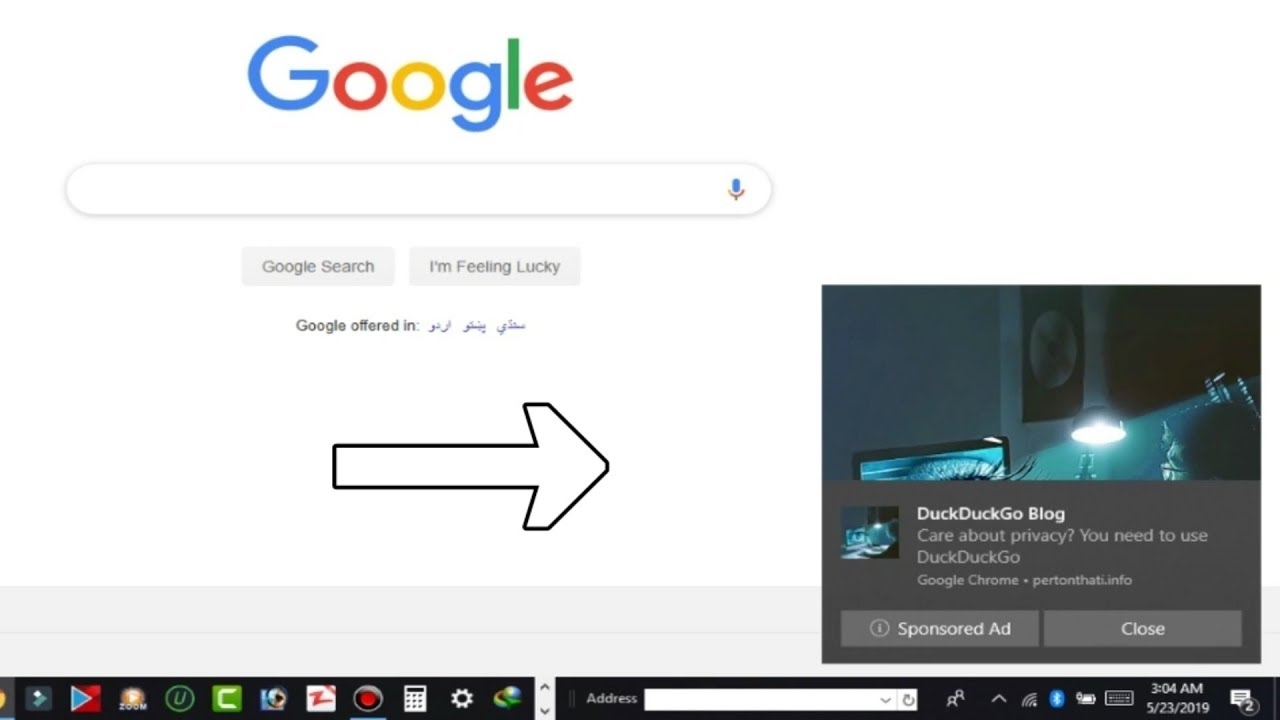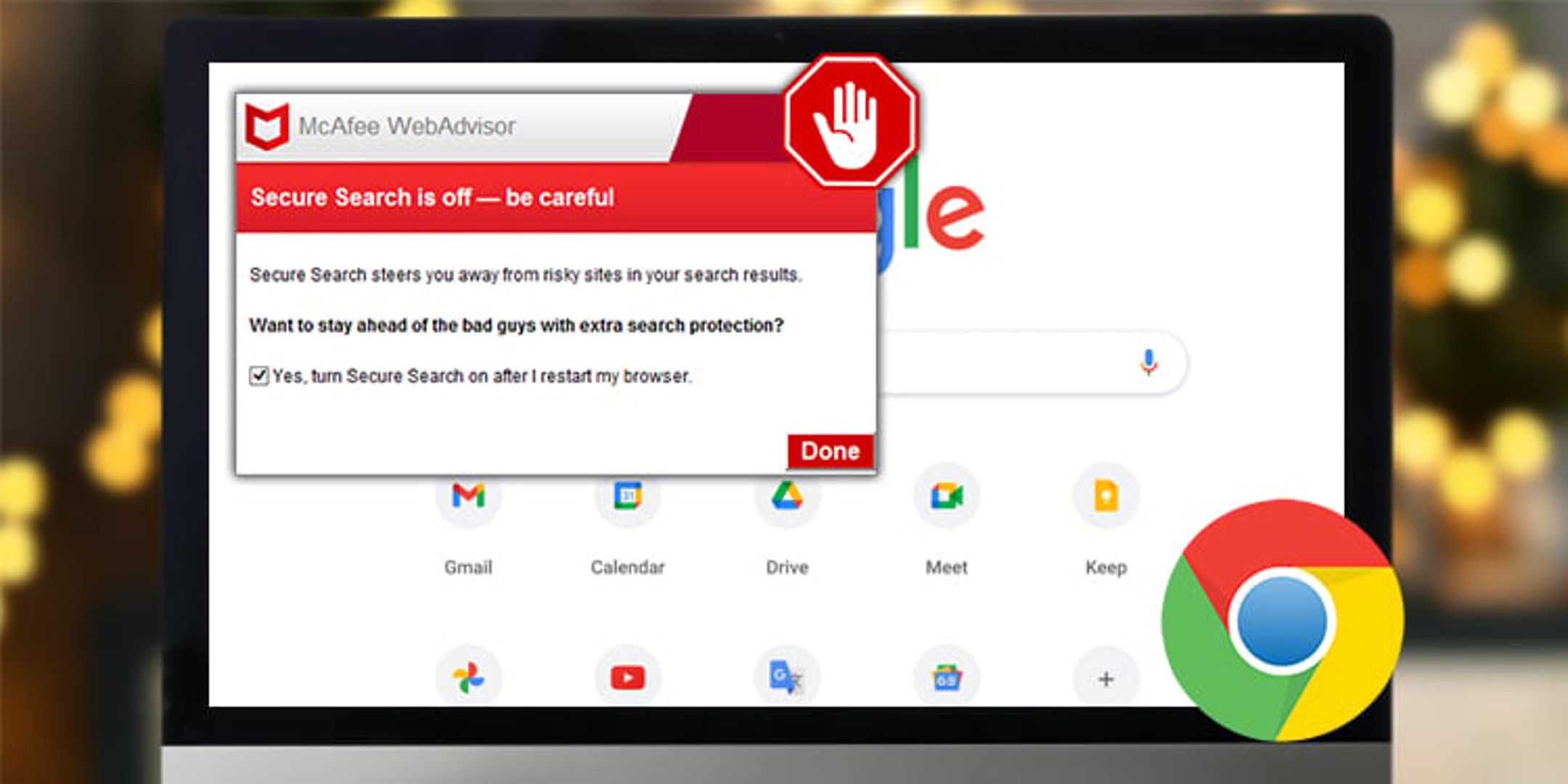Introduction
Pop-up ads can be incredibly frustrating, especially when they disrupt your browsing experience on Android Chrome. These intrusive windows seem to appear out of nowhere, often when you're in the midst of reading an article or trying to complete a task. Not only are pop-ups annoying, but they can also pose security risks by leading you to malicious websites or deceptive content.
Thankfully, there are effective ways to combat these pesky pop-ups and regain control of your browsing experience. In this guide, we'll delve into the world of pop-ups on Android Chrome, exploring the reasons behind their prevalence and the potential risks they pose. Furthermore, we'll equip you with practical strategies to stop pop-ups in their tracks, allowing you to browse the web with peace of mind and uninterrupted focus.
So, if you've ever found yourself exasperated by the sudden appearance of pop-up ads while using Chrome on your Android device, you're not alone. Many users encounter this issue, and it's essential to understand how to address it effectively. By the end of this guide, you'll be equipped with the knowledge and tools to minimize or eliminate pop-ups, enabling you to enjoy a seamless and secure browsing experience on your Android device.
Understanding Pop-Ups on Android Chrome
Pop-up ads are a common nuisance encountered by users while browsing the web on Android Chrome. These intrusive windows can appear suddenly, disrupting the user experience and potentially leading to unwanted interactions with deceptive or malicious content. Understanding the nature of pop-ups is crucial in effectively addressing this issue.
Why Do Pop-Ups Appear?
Pop-ups are often generated by websites as a form of advertising. They are designed to capture the user's attention by displaying promotional content or offers. While some pop-ups may be legitimate and serve a purpose, many are intrusive and disruptive, diminishing the overall browsing experience.
In some cases, pop-ups may also be triggered by malicious scripts or code embedded within certain websites. These deceptive pop-ups can lead users to phishing sites, fake software downloads, or other harmful content, posing a significant security risk.
Types of Pop-Ups
-
Overlay Pop-Ups: These pop-ups cover the entire screen, preventing users from accessing the underlying content until the pop-up is dismissed.
-
New Tab Pop-Ups: When browsing on Android Chrome, pop-ups may open in new tabs, redirecting users to unwanted websites or landing pages.
-
Notification Pop-Ups: Some websites prompt users to enable notifications, leading to a barrage of intrusive pop-up notifications even when the browser is closed.
Impact on User Experience
The sudden appearance of pop-ups can disrupt the user's focus and detract from the intended browsing activity. Moreover, frequent encounters with pop-ups can lead to frustration and a diminished sense of security, especially when users are unsure about the legitimacy of the displayed content.
Risks Associated with Pop-Ups
Beyond the annoyance they cause, pop-ups can pose significant risks to users. Clicking on deceptive pop-ups can lead to the installation of malware, unauthorized subscription sign-ups, or exposure to fraudulent schemes. Additionally, some pop-ups may attempt to deceive users into providing personal information, leading to potential identity theft or financial harm.
Addressing the Issue
Understanding the nature of pop-ups on Android Chrome is the first step in effectively addressing this issue. By recognizing the various types of pop-ups and the potential risks they pose, users can take proactive measures to mitigate their impact and protect their browsing experience.
In the following sections, we will explore practical strategies to stop pop-ups on Android Chrome, empowering users to regain control of their browsing environment and minimize the disruptive effects of intrusive advertising and malicious content.
How to Stop Pop-Ups on Android Chrome
Enable Chrome's Built-In Pop-Up Blocker
One of the most effective ways to combat pop-ups on Android Chrome is by leveraging the browser's built-in pop-up blocker. This feature is designed to automatically detect and suppress intrusive pop-up windows, providing users with a smoother and more secure browsing experience. To ensure that the pop-up blocker is enabled, follow these steps:
-
Open Chrome Settings: Tap the three-dot menu icon in the top-right corner of the Chrome browser and select "Settings" from the menu.
-
Access Site Settings: Scroll down and tap on "Site settings" under the "Advanced" section.
-
Enable Pop-Ups and Redirects: Within the Site settings menu, tap on "Pop-ups and redirects" to access the corresponding settings.
-
Toggle the Blocker: Ensure that the toggle switch next to "Pop-ups and redirects" is activated, indicating that the pop-up blocker is enabled.
By enabling Chrome's built-in pop-up blocker, users can significantly reduce the occurrence of intrusive pop-up ads while browsing on their Android devices.
Install Ad-Blocking Extensions
In addition to Chrome's native pop-up blocker, users can further enhance their browsing experience by installing ad-blocking extensions. These extensions are designed to identify and block various forms of online advertisements, including pop-ups, banner ads, and other intrusive elements. To install an ad-blocking extension on Android Chrome, follow these steps:
-
Navigate to the Chrome Web Store: Tap the three-dot menu icon in the top-right corner of the Chrome browser and select "Extensions" from the menu.
-
Search for Ad-Blocking Extensions: In the Extensions menu, use the search bar to look for ad-blocking extensions such as "Adblock Plus" or "uBlock Origin."
-
Install the Extension: Select the desired ad-blocking extension from the search results and tap "Add to Chrome" to initiate the installation process.
-
Confirm Installation: Follow the on-screen prompts to confirm the installation of the ad-blocking extension.
Once installed, the ad-blocking extension will work in conjunction with Chrome's pop-up blocker to minimize the impact of intrusive ads and enhance the overall browsing experience.
Clear Browsing Data and Reset Chrome Settings
In some cases, persistent pop-ups may be associated with cached data or altered browser settings. To address this, users can clear their browsing data and reset Chrome settings to restore the browser to its default state. Follow these steps to clear browsing data and reset Chrome settings:
-
Access Chrome Settings: Tap the three-dot menu icon in the top-right corner of the Chrome browser and select "Settings" from the menu.
-
Clear Browsing Data: Within the Settings menu, navigate to "Privacy and security" and select "Clear browsing data." Choose the desired time range and select the types of data to clear, including cookies, cached images, and site settings.
-
Reset Chrome Settings: Return to the Settings menu and select "Advanced" followed by "Reset settings." Confirm the reset process to restore Chrome to its default configuration.
By clearing browsing data and resetting Chrome settings, users can eliminate potential triggers for persistent pop-ups and restore the browser to a clean state.
Update Chrome and Android System
Keeping Chrome and the Android operating system up to date is essential for maintaining optimal browser performance and security. Updates often include bug fixes, security patches, and enhancements to the browser's functionality, which can contribute to a more stable and secure browsing experience. To update Chrome and the Android system:
-
Update Chrome: Open the Google Play Store, tap the menu icon, and select "My apps & games." Locate Chrome in the list of installed apps and tap "Update" if an update is available.
-
Update Android System: Access the device's settings, navigate to "System" or "About phone," and select "System updates" to check for and install any available updates for the Android operating system.
By ensuring that both Chrome and the Android system are up to date, users can benefit from the latest security enhancements and performance improvements, reducing the likelihood of encountering disruptive pop-up ads.
Utilize Safe Browsing Features
Chrome offers a range of security features, including Safe Browsing, which helps protect users from deceptive websites and potential security threats. By enabling Safe Browsing, users can receive warnings about suspicious sites and prevent inadvertent interactions with harmful content. To enable Safe Browsing on Android Chrome:
-
Access Chrome Settings: Tap the three-dot menu icon in the top-right corner of the Chrome browser and select "Settings" from the menu.
-
Enable Safe Browsing: Within the Settings menu, navigate to "Privacy and security" and select "Safe Browsing." Choose the desired level of protection, such as "Standard protection" or "Enhanced protection."
By leveraging Chrome's Safe Browsing feature, users can add an extra layer of security to their browsing experience, reducing the likelihood of encountering malicious pop-ups and deceptive content.
Implementing Additional Security Measures
In addition to the aforementioned strategies, users can implement additional security measures to bolster their defenses against pop-ups and potential online threats. These measures include:
-
Installing Antivirus Software: Consider installing reputable antivirus software on your Android device to detect and prevent malware, including any threats that may be associated with pop-up ads.
-
Exercising Caution: Be vigilant when interacting with pop-ups and avoid clicking on suspicious or unsolicited content. Exercise caution when prompted to download or install software from unfamiliar sources.
-
Educating Yourself: Stay informed about common online threats and scams, empowering yourself to recognize and avoid deceptive pop-ups and malicious content.
By implementing these additional security measures, users can further fortify their defenses against pop-ups and safeguard their browsing activities on Android Chrome.
By implementing these proactive measures, users can effectively combat pop-ups on Android Chrome, reclaiming control of their browsing experience and minimizing the disruptive effects of intrusive advertising and potential security risks.
Additional Tips for Managing Pop-Ups
In addition to the core strategies for stopping pop-ups on Android Chrome, there are several supplementary tips that can further enhance the browsing experience and mitigate the impact of intrusive advertising. These additional tips encompass proactive measures and best practices aimed at minimizing the occurrence of pop-ups and fortifying the overall security of the browsing environment.
Customize Content Settings
Chrome's content settings offer users the ability to customize their browsing experience by controlling permissions for cookies, JavaScript, and other site-specific features. By accessing content settings, users can fine-tune their preferences to limit the display of intrusive pop-ups and mitigate potential security risks associated with certain website elements. To access content settings:
- Tap the three-dot menu icon in the top-right corner of the Chrome browser and select "Settings."
- Navigate to "Site settings" under the "Advanced" section.
- Customize permissions for cookies, JavaScript, and other content features based on individual preferences and security considerations.
By customizing content settings, users can exert greater control over the types of content that websites are allowed to display, thereby reducing the likelihood of encountering disruptive pop-ups and enhancing overall browsing security.
Exercise Caution with Downloads
When encountering pop-ups that prompt users to download software, files, or other content, it is essential to exercise caution and discernment. Avoid initiating downloads from unfamiliar or unverified sources, as these pop-ups may lead to the installation of potentially harmful or unwanted software. By exercising caution and verifying the legitimacy of download prompts, users can minimize the risk of inadvertently exposing their devices to malicious content.
Report Suspicious Sites
Chrome provides users with the ability to report suspicious or deceptive websites, contributing to the collective effort to combat online threats and protect other users from encountering harmful content. If a pop-up leads to a website that appears to be engaging in deceptive practices or malicious behavior, users can report the site to Google for further investigation and potential inclusion in Safe Browsing databases. Reporting suspicious sites not only helps protect other users but also contributes to the overall security of the web ecosystem.
Stay Informed and Remain Vigilant
Staying informed about the latest trends in online threats and remaining vigilant while browsing the web are fundamental practices for managing pop-ups and maintaining a secure online environment. By staying abreast of emerging threats, users can recognize and respond to potential risks more effectively, thereby reducing the likelihood of falling victim to deceptive pop-ups and malicious content. Additionally, remaining vigilant and exercising caution when interacting with online content can significantly contribute to a safer and more secure browsing experience.
By incorporating these additional tips into their browsing habits, users can further bolster their defenses against pop-ups and deceptive online practices, ultimately fostering a more secure and enjoyable browsing experience on Android Chrome.
Conclusion
In conclusion, addressing the issue of pop-up ads on Android Chrome is essential for preserving a seamless and secure browsing experience. By understanding the nature of pop-ups, their potential risks, and the strategies to combat them, users can reclaim control of their online activities and minimize the disruptive effects of intrusive advertising and malicious content.
The prevalence of pop-up ads underscores the importance of leveraging the built-in features and additional tools available within Chrome to mitigate their impact. Enabling Chrome's native pop-up blocker, installing ad-blocking extensions, and customizing content settings empower users to proactively manage the display of intrusive ads and enhance their overall browsing security.
Furthermore, clearing browsing data, resetting Chrome settings, and keeping both Chrome and the Android system up to date are crucial steps in maintaining a stable and secure browsing environment. These measures not only contribute to a smoother browsing experience but also reduce the likelihood of encountering deceptive pop-ups and potential security threats.
In addition to technical solutions, exercising caution, staying informed about online threats, and reporting suspicious sites are integral components of a comprehensive approach to managing pop-ups. By remaining vigilant and discerning when interacting with online content, users can further fortify their defenses against deceptive practices and safeguard their browsing activities.
Ultimately, by implementing the strategies outlined in this guide and incorporating additional tips for managing pop-ups, users can navigate the online landscape with confidence, minimizing the impact of intrusive advertising and potential security risks. By taking proactive measures and staying informed, users can enjoy a more secure and enjoyable browsing experience on Android Chrome, free from the disruptions caused by unwanted pop-up ads.







